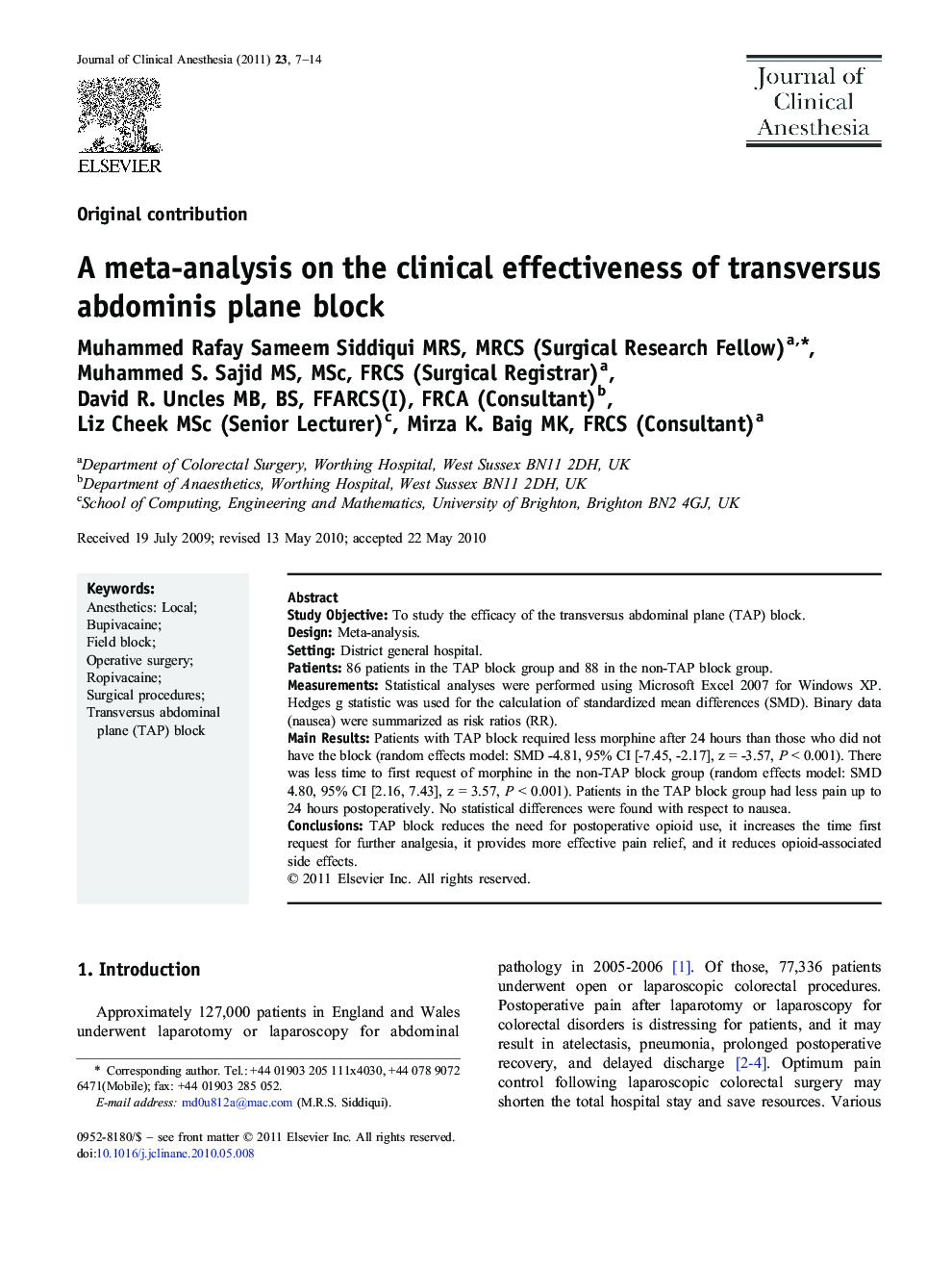| Article ID | Journal | Published Year | Pages | File Type |
|---|---|---|---|---|
| 2763600 | Journal of Clinical Anesthesia | 2011 | 8 Pages |
Study ObjectiveTo study the efficacy of the transversus abdominal plane (TAP) block.DesignMeta-analysis.SettingDistrict general hospital.Patients86 patients in the TAP block group and 88 in the non-TAP block group.MeasurementsStatistical analyses were performed using Microsoft Excel 2007 for Windows XP. Hedges g statistic was used for the calculation of standardized mean differences (SMD). Binary data (nausea) were summarized as risk ratios (RR).Main ResultsPatients with TAP block required less morphine after 24 hours than those who did not have the block (random effects model: SMD -4.81, 95% CI [-7.45, -2.17], z = -3.57, P < 0.001). There was less time to first request of morphine in the non-TAP block group (random effects model: SMD 4.80, 95% CI [2.16, 7.43], z = 3.57, P < 0.001). Patients in the TAP block group had less pain up to 24 hours postoperatively. No statistical differences were found with respect to nausea.ConclusionsTAP block reduces the need for postoperative opioid use, it increases the time first request for further analgesia, it provides more effective pain relief, and it reduces opioid-associated side effects.
